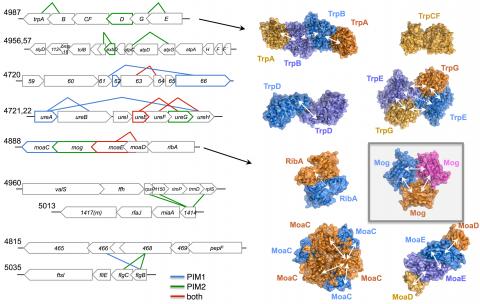Proteome data improves protein function prediction in the interactome of H. pylori

Wuchty S, Mueller S, Caufield H, Haeuser R, Aloy P, Kalkhof S, Uetz P, Helicobacter pylori is a common pathogen that is estimated to infect half of the human population, causing several diseases such as duodenal ulcer. Despite one of the first pathogens to be sequenced, its proteome remains poorly characterised as about one third of its proteins have no functional annotation. Here, we integrate and analyze known protein interactions with proteomic and genomic data from different sources. We find that proteins with similar abundances tend to interact. Such an observation is accompanied by a trend of interactions to appear between proteins of similar functions, although some show marked cross-talk to others. Protein function prediction with protein interactions is significantly improved when interactions from other bacteria are included in our network, allowing us to obtain putative functions of more than 300 poorly or previously uncharacterized proteins. Proteins that are critical for the topological controllability of the underlying network are significantly enriched with genes that are up-regulated in the spiral compared to the coccoid form of H. pylori. Determining their evolutionary conservation, we present evidence for 80 protein complexes to be identical in composition with their counterparts in E. coli while 85 are partially conserved but 120 complexes are completely absent. Furthermore, we determine network clusters that coincide with related functions gene essentiality, genetic context, cellular localization, and gene expression in different cellular states.
Molecular & Cell Proteomics,
2018, 17(5), 961-973
Pubmed: 29414760
Direct link: 10.1074/mcp.RA117.000474
